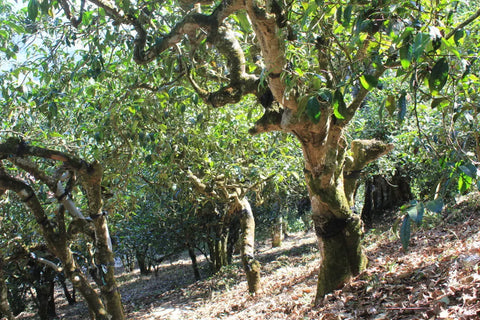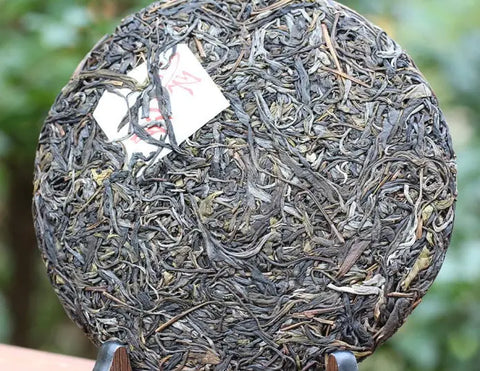
Pu'erh Tea Fundamentals: What Is Pu'erh Tea and Why is it Special?
Puerh tea originated in the Yunnan Province in China, somewhere around the 4th Century. In fact, it derives its name from Pu’er City, which is located in southern Yunnan Province. Puerh is (usually green) tea that has been fermented through an aging process. This process can be done naturally or artificially.

When puerh tea is artificially aged, it is usually done somewhere in rooms with forced air and where the temperature is very finely controlled. The fermentation process is then accelerated with the introduction of a mold that can help lower the tea’s pH level. The result is a style of puerh known as shou cha (“ripe tea”). Most often, this aging process takes place in a factory.
While some tea traditionalists tend to shun factory-produced puerh tea, it is important to realize that this is not necessarily a bad thing. Some factories have actually produced some outstanding, artificially aged puerhs, and so to eliminate tasting some on the basis of being factory-produced is to cheat yourself out of some good tea.
When puerh tea is naturally aged, it is stored under conditions that are optimal for a natural fermentation process. As the tea is left alone in storage, microorganisms begin breaking down some of the tea, which eventually result in sheng cha (“raw tea”). Sheng puerh can be aged as little as six months or as long as one desires, and it boasts a dynamic range of flavor.

The longer that this tea is aged, the more valuable it becomes for collectors, and so it can command quite a price in the tea market. Generally, as far as optimal desirable flavors are concerned, one tends to prefer sheng puerh that has not been aged for more than 15 years. There are exceptions of course, but it is nice to know that you can have a great puerh even from those teas that have not been subject to extensive aging. Age is not always indicative of quality.
Probably one of the most fascinating things about puerh tea is that the fermentation process actually changes the chemical composition of the tea. Whereas, some of the compounds associated with the health benefits of tea, such as catechins and theaflavins, tend to decrease, others are produced and increase, such as naturally occurring statins and a bioactive chemical known as theabrownin, both of which are implicated in having positive effects on cholesterol in lab studies.
When traveling and looking for puerh, it might be helpful to keep in mind that the Chinese actually refer to puerh as “black tea” or “dark tea,” and what we commonly associate with black tea in the West is known as “red tea.” One way to keep this distinction in mind is by remembering that the names are associated with the colors of the tea liquors rather than the tea leaves. While black tea certainly commonly features tea leaves that are black in appearance, when steeped, they often produce a liquor that ranges from a golden honey to a ruby red, making “red tea” an appropriate title.
Part of what makes puerh special is that it has a forgiving shelf life that can sometimes even make your tea taste better with time.
For those of you in the northern Virginia or Washington DC areas, do not hesitate to sign up for our Tea Class on “The Fundamentals and Tasting of Puerh Tea” for a wonderful and exciting hands-on experience.
